- Home
- Quizzes
- My Quiz Activity
- Newsletters
- Sports Betting
- MY FAVORITES
- Add Sports/Teams
- SPORTS
-
NFL
- NFL Home
- Arizona Cardinals
- Atlanta Falcons
- Baltimore Ravens
- Buffalo Bills
- Carolina Panthers
- Chicago Bears
- Cincinnati Bengals
- Cleveland Browns
- Dallas Cowboys
- Denver Broncos
- Detroit Lions
- Green Bay Packers
- Houston Texans
- Indianapolis Colts
- Jacksonville Jaguars
- Kansas City Chiefs
- Las Vegas Raiders
- Los Angeles Chargers
- Los Angeles Rams
- Miami Dolphins
- Minnesota Vikings
- New England Patriots
- New Orleans Saints
- New York Jets
- New York Giants
- Philadelphia Eagles
- Pittsburgh Steelers
- San Francisco 49ers
- Seattle Seahawks
- Tampa Bay Buccaneers
- Tennessee Titans
- Washington Commanders
-
MLB
- MLB Home
- Arizona Diamondbacks
- Atlanta Braves
- Baltimore Orioles
- Boston Red Sox
- Chicago White Sox
- Chicago Cubs
- Cincinnati Reds
- Cleveland Guardians
- Colorado Rockies
- Detroit Tigers
- Houston Astros
- Kansas City Royals
- Los Angeles Angels
- Los Angeles Dodgers
- Miami Marlins
- Milwaukee Brewers
- Minnesota Twins
- New York Yankees
- New York Mets
- Oakland Athletics
- Philadelphia Phillies
- Pittsburgh Pirates
- San Diego Padres
- San Francisco Giants
- Seattle Mariners
- St. Louis Cardinals
- Tampa Bay Rays
- Texas Rangers
- Toronto Blue Jays
- Washington Nationals
-
NBA
- NBA Home
- Atlanta Hawks
- Boston Celtics
- Brooklyn Nets
- Charlotte Hornets
- Chicago Bulls
- Cleveland Cavaliers
- Dallas Mavericks
- Denver Nuggets
- Detroit Pistons
- Golden State Warriors
- Houston Rockets
- Indiana Pacers
- Los Angeles Clippers
- Los Angeles Lakers
- Memphis Grizzlies
- Miami Heat
- Milwaukee Bucks
- Minnesota Timberwolves
- New Orleans Pelicans
- New York Knicks
- Oklahoma City Thunder
- Orlando Magic
- Philadelphia 76ers
- Phoenix Suns
- Portland Trail Blazers
- Sacramento Kings
- San Antonio Spurs
- Toronto Raptors
- Utah Jazz
- Washington Wizards
-
NHL
- NHL Home
- Anaheim Ducks
- Arizona Coyotes
- Boston Bruins
- Buffalo Sabres
- Calgary Flames
- Carolina Hurricanes
- Chicago Blackhawks
- Colorado Avalanche
- Columbus Blue Jackets
- Dallas Stars
- Detroit Red Wings
- Edmonton Oilers
- Florida Panthers
- Los Angeles Kings
- Minnesota Wild
- Montreal Canadiens
- Nashville Predators
- New Jersey Devils
- New York Islanders
- New York Rangers
- Ottawa Senators
- Philadelphia Flyers
- Pittsburgh Penguins
- San Jose Sharks
- Seattle Kraken
- St. Louis Blues
- Tampa Bay Lightning
- Toronto Maple Leafs
- Vancouver Canucks
- Vegas Golden Knights
- Washington Capitals
- Winnipeg Jets
- NCAAF
- NCAAM
- Boxing
- Entertainment
- Lifestyle
- Golf
- MMA
- Soccer
- Tennis
- Wrestling
- More Sports
- RESOURCES
- My Account
- YB on Facebook
- YB on Twitter
- YB on Flipboard
- Contact Us
- Privacy Policy
- Terms of Service
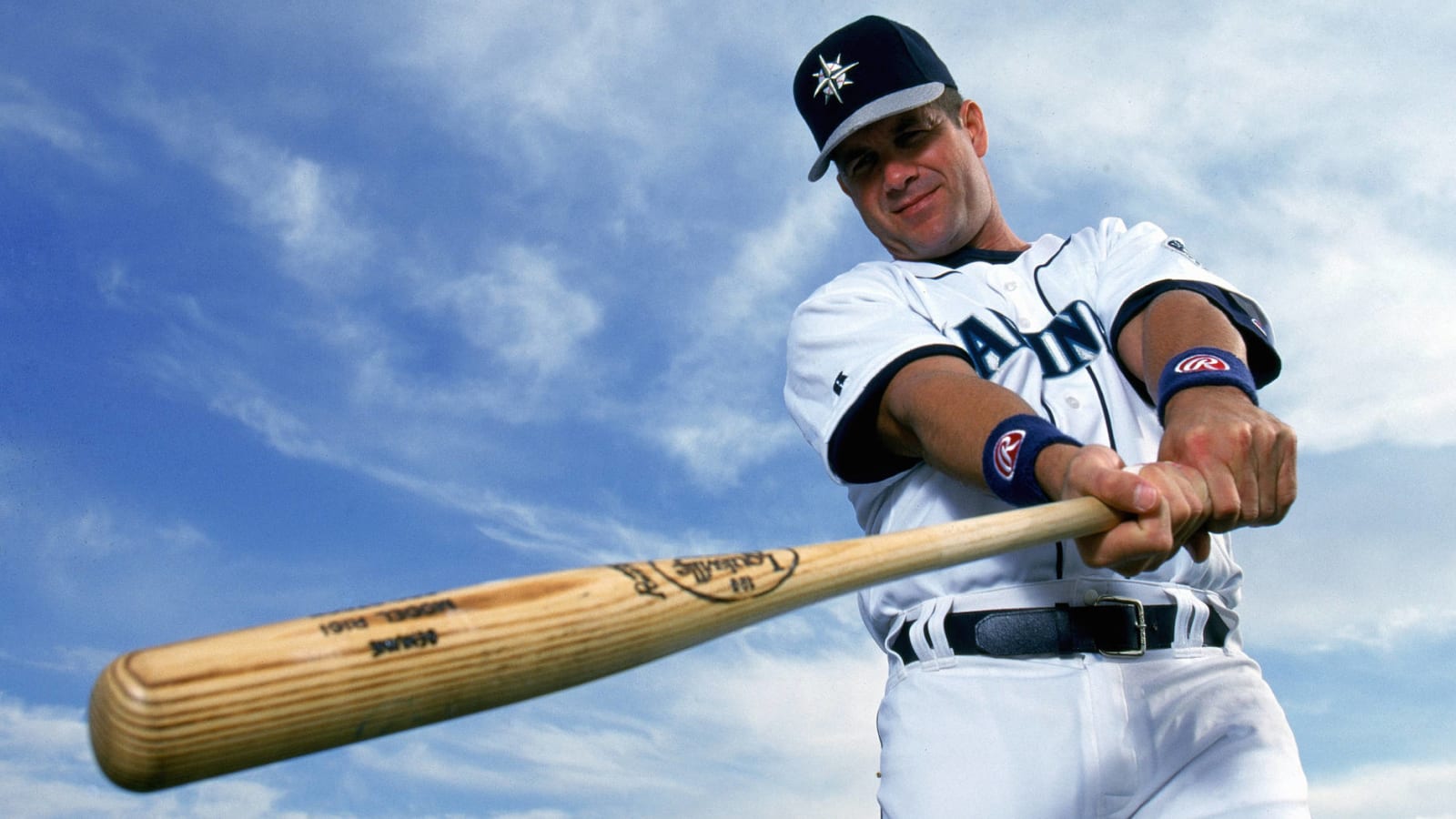
The signature moments from the 2019 Hall of Fame Class
While a Hall of Fame career requires a robust and full resume of accomplishments, there are moments that stand out along the way that define it as well. The 2019 Baseball Hall of Fame class is no exception to this, as these six former players have been responsible for many of the most enduring marks in MLB history. Here is a look at five of the defining moments in the careers of Harold Baines, Roy Halladay, Edgar Martinez, Mike Mussina, Mariano Rivera and Lee Smith.
Harold Baines (1980-2001)

Baines spent 22 years in the majors, suiting up for the Chicago White Sox (on three different occasions), Baltimore Orioles, Oakland Athletics, Texas Rangers and Cleveland Indians. After beginning his career as a right fielder, Baines’ biggest claim was becoming the first premier performer as a designated hitter. A six-time All-Star, he retired in the top 10 in American League history in games played (2,830) and runs batted in (1,628). Baines hit .324 lifetime in postseason play, reaching four American League championship series overall and the World Series in 1990 with Oakland. Baines was elected via the Today’s Game veterans ballot.
1984: 25th inning walk-off homer
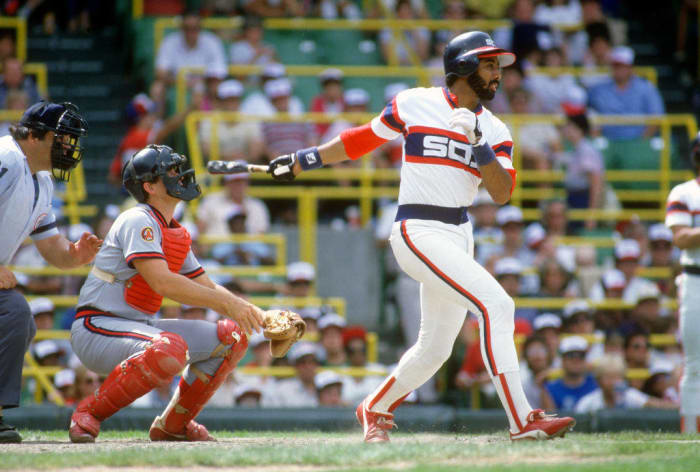
On May 8 and 9 of 1984, the White Sox and Brewers faced off in a 25-inning affair that crossed over into two days. The longest game in American League history mercifully came to an end when Baines hit a walk-off home run in the bottom of the 25th inning. It was the third of 10 career walk-off homers for Baines, tied for seventh-most in MLB history.
1986: move to designated hitter
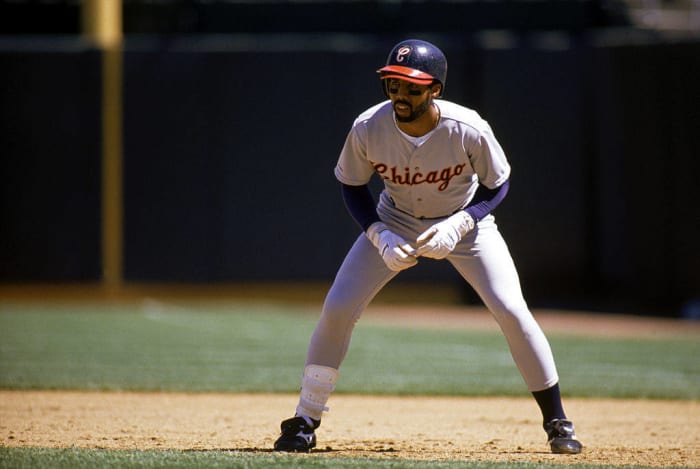
By 1987 a series of knee injuries had begun to damage Baines’ range in right field. As a response, he opened the season as the White Sox designated hitter, the position that would subsequently come to define his career. Baines was elected an All-Star for the third-consecutive year in 1987, hitting 20 home runs with 93 RBI and a .293 average. It was one of four seasons of 20/90/.290 for Baines as a DH.
1989: return to Chicago and an “un-retirement”
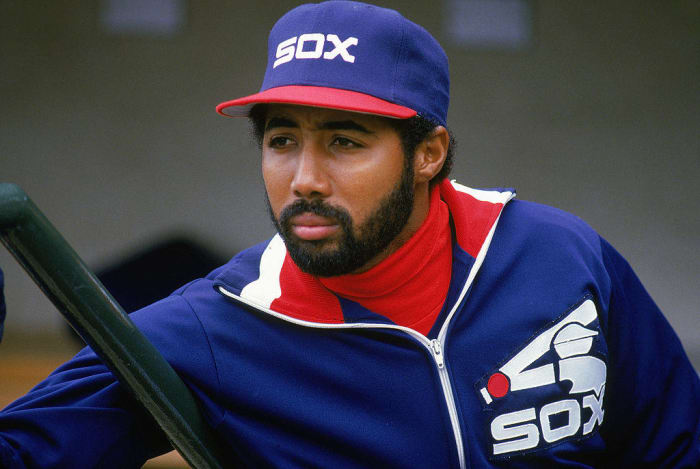
After being selected with the first-overall pick in the 1977 draft by the White Sox, Baines had spent a decade with the club by 1989. But amid a fourth consecutive losing season, the club traded Baines to the Texas Rangers, getting Wilson Alvarez, Sammy Sosa and Scott Fletcher in return, a move that was berated by the White Sox faithful who loved Baines. In a rare move, the club in-turn retired Baines’ No. 3 — while he was still an active player. Baines would rejoin the team twice as a player, in 1996 and 2000, and again as a coach in 2004, calling for the number to be "un-retired" on three-different occasions.
1992: Three-homer game for the A’s
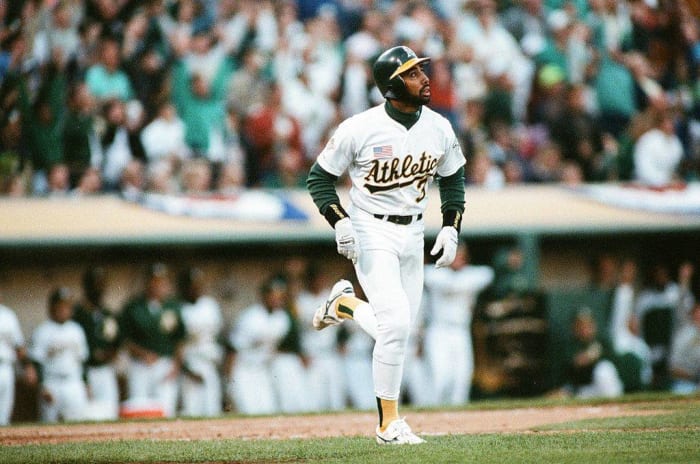
Baines three-year stint with the Oakland A’s was a productive one, with the veteran DH being named an All-Star in 1991 and playing a part in the club reaching the World Series in 1990 and American League Championship Series in 1991. His biggest game as an Athletic came amid that All-Star season in ’91, when Baines hit three home runs and drove in seven runs against the Baltimore Orioles. It was the third three-homer game of his career, with others coming in 1982 and 1984.
1999: Walk-off grand slam
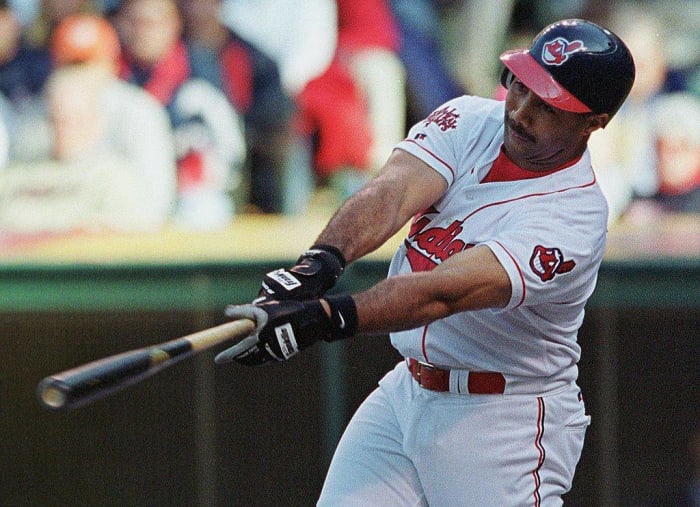
Baines was one of the great clutch hitters of all time, connecting for a combined 23 walk-off homers and grand slams in his career. In 1999 at the age of 40, Baines brought both events together for the only time in his career, hitting a walk-off grand slam for Baltimore Orioles against none other than the Chicago White Sox. It would also be the final walk-off homer and slam, respectively, of his career.
Roy Halladay (1998-2013)

One of the most intense and surgical competitors to ever take the mound, at his peak powers, "Doc" Halladay was the premier pitcher in the game. He played his first 12 seasons in Toronto, where he was a six-time All-Star and winner of the 2003 AL Cy Young Award. Following a trade in December 2009, Halladay spent his final four seasons in Philadelphia, where he again won Cy Young honors, in 2010. Halladay finished in the top five of six consecutive Cy Young ballots from 2006 to 2011. Tragically, Halladay died in 2017 after a plane he was piloting crashed. Posthumously, he appeared on 85.4 percent of ballots in his first year of eligibility.
1998: A near no-hitter in second start

On Sept. 27, 1998 at age 21, Halladay came within inches of throwing a no-hitter in his second career start. With two outs in the ninth inning, eight strikeouts and zero walks, he surrendered a home run to Detroit Tigers outfielder Bobby Higginson, losing both his first career shutout and no-hitter in the process. However, he did pick up his first of his 203 career wins and 67 complete games on the next pitch. The shutouts would come as well, and he would single-handedly keep opponents off the scoreboard 21 times in his regular and postseason careers.
2003: 10-inning complete game…with 99 pitches
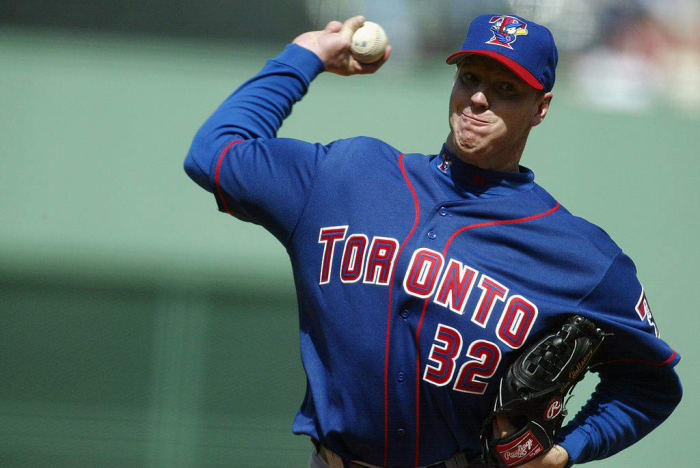
Halladay became known for being one of the most aggressive workhorses of his era, leading his league in innings pitched four times while also finishing in the top three in fewest walks allowed in five different seasons. Never did he display this blend of precision and durability more than on Sept. 6, 2003 when he pitched a 10-inning shutout against the Tigers, allowing just three hits and one walk in the process. It was the crowning performance in Halladay’s first Cy Young Award-winning season, as he went 22-7 with 204 strikeouts over a career-high 266 innings.
2010: perfection in Philly
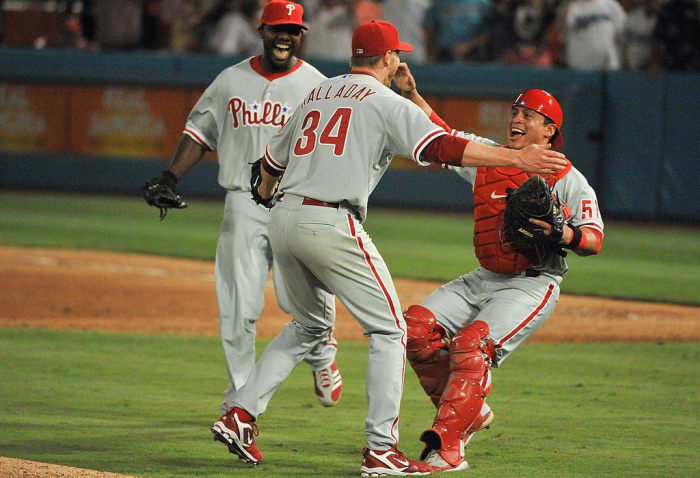
Amid much fanfare, Halladay was dealt to the Philadelphia Phillies in the winter of 2009, where he joined Cole Hamels, Roy Oswalt and Cliff Lee to form one of the most formidable rotations in MLB history. On May 29, Halladay made his first major mark as a National Leaguer, throwing the 20 th perfect game in MLB history in 1-0 win over the Florida Marlins. As a token of appreciation, Halladay bought 60 watches for his teammates and team personnel in celebration.
2010: The greatest postseason debut ever
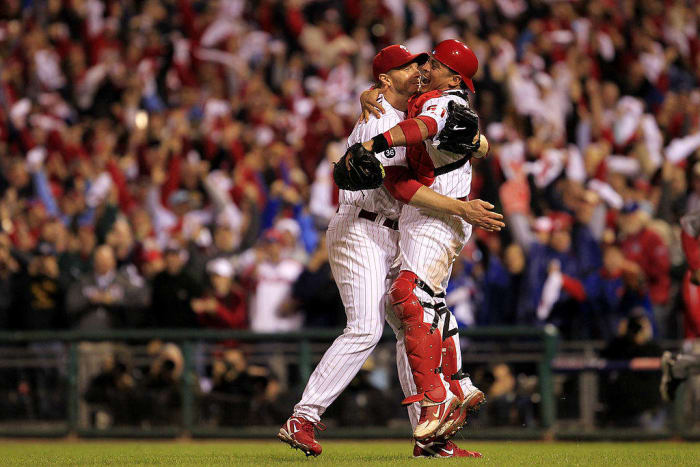
After spending much of his career as the best tough-luck pitcher in the game for a series of underwhelming Blue Jays teams, Halladay finally made his postseason debut in his 13th season. He marked the opportunity with the greatest such debut in history, throwing a no-hitter against the Cincinnati Reds in Game 1 of the NL Division Series on Oct. 6, 2010. It was the second postseason no-hitter in MLB history, following Don Larsen’s World Series perfect game 54 years earlier.
2011: Showdown with Carpenter

Halladay and Chris Carpenter were close friends, spending the early days of their careers together in Toronto. The pair reunited as foes in Game 5 of the 2011 NLDS between the Phillies and St. Louis Cardinals, which became a pitcher's dual for the ages. The two similarly wired aces stared each other down through eight innings, with the Cardinals winning a 1-0 nail-biter. Halladay allowed just one run over eight innings, with Carpenter barely outdoing his friend, pitching a three-hit, complete-game shutout. It would be Halladay’s final postseason appearance, where he went 3-2 with a 2.37 ERA over five career outings.
Edgar Martinez (1987-2004)

Martinez spent his entire 18-year-career with the Seattle Mariners, much of the time redefining the designated hitter role. A two-time batting champ and seven-time All-Star, Martinez received five Silver Slugger Awards at DH. Considered by Mariano Rivera as the toughest opponent he ever faced (he hit .579 lifetime against Rivera), Martinez was one of the most revered hitters of his generation. Martinez received 85.4 percent of the vote in his 10th and final year on the ballot.
1990: full-time rise to prominence

After spending the first three years of his career as a part-time contributor in Seattle, Martinez got his first big opportunity in the summer of 1990. At the time, he was the everyday third baseman for the Mariners and hit .302 for the year. He would remain the club’s primary option at the position over the next five years, hitting over .300 in three of those seasons.
1992: breakout campaign and injury woes
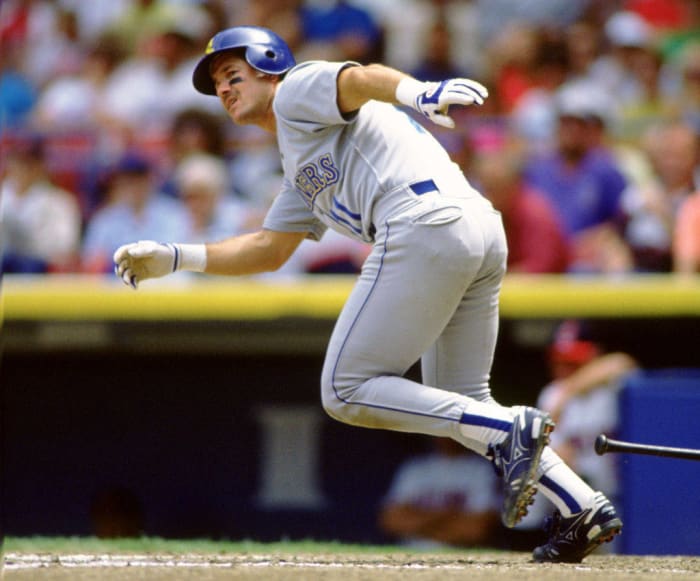
1992 proved to be the breakout season for Martinez, who made his first All-Star Game after hitting .328 with 14 homers in the first half of the season. He would go on to win his first batting title during the year as well, hitting .343 for the year. However, the injury bug that would plague him over the next two years of his career began to manifest as well, limiting him to only 53 games following the All-Star break. Between 1993-94, Martinez played only 131 games due to a mixture of wrist and hamstring issues.
1995: full-time switch to DH
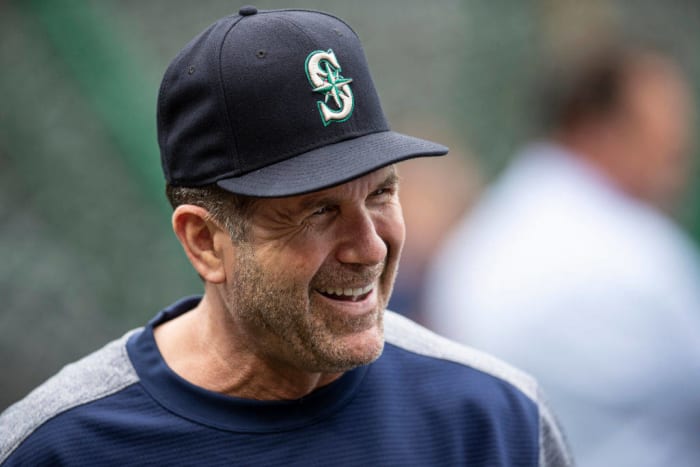
In an effort to lessen the chance at injuries continuing to impact his availability, Martinez was moved to designated hitter full time in 1995. The impact of the change was immediate, as he produced the best season of his career. He won the AL batting title for a second time, hitting a career-best .356. He also led the circuit in runs scored (121), doubles (52), on-base percentage (.479) and OPS (1.107). He finished third in AL MVP voting for the AL West champion Mariners.
1995: "The Double"

Martinez delivered the defining moment of his career in Game 5 of the 1995 ALDS vs. the New York Yankees. In the bottom of the ninth inning against Yankees ace Jack McDowell, Martinez drove a double down the left field line that scored Joey Cora, followed by Ken Griffey Jr., as the series-clinching run. The win sent Seattle to the AL Championship Series for the first time in franchise history and capped a dominant series by Martinez, in which he hit .571 while reaching base 18 times, including a seven-RBI effort in Game 4, with a three-run homer followed by a game-winning grand slam.
2004: a legacy secured
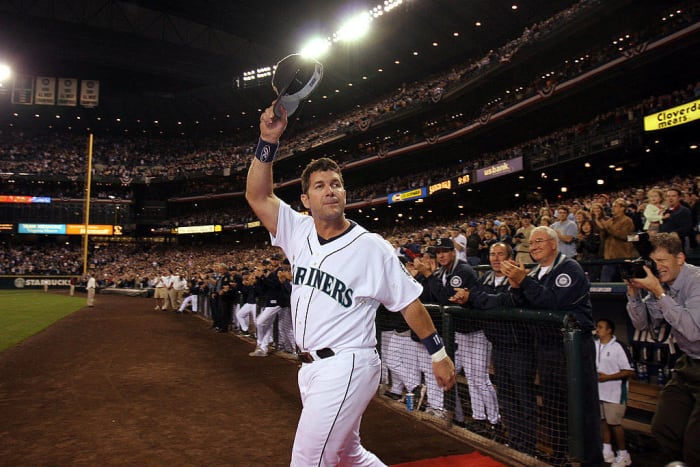
By 2004, injuries had taken their toll on Martinez, and at age 41 he called it quits. He had established himself as the sixth player in MLB history to compile 300 homers, 500 doubles and 1,000 walks while having a career batting average of .300 and a .400 on-base percentage. As a final honor, commissioner Bud Selig renamed the award for Most Outstanding Designated Hitter — an award Martinez won five times — in his honor at a pregame celebration of his career.
Mike Mussina (1991-2008)
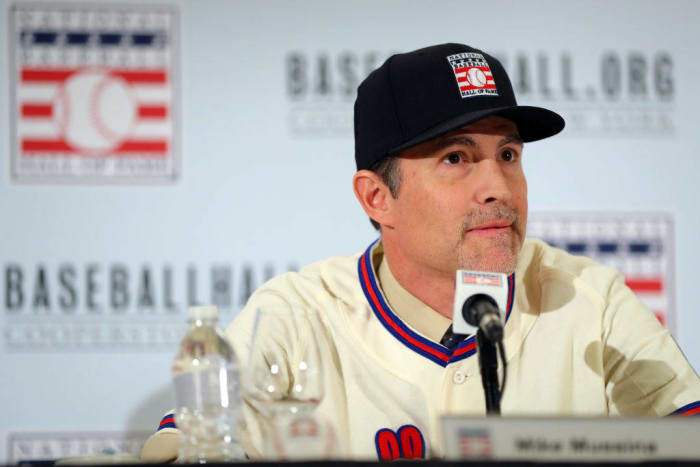
One of the most consistent pitchers of all time, Mussina spent his entire 17-year career in the tough American League East, between stints with the Baltimore Orioles and New York Yankees. Armed with a devastating curveball, Mussina won 270 games via posting double-digit win total in an AL-record 17 consecutive seasons. Also a five-time All-Star, Mussina was an excellent fielder, capturing seven Gold Glove Awards, the third-most in history by an AL pitcher. Mussina was elected in his fifth year on the ballot, via 76.7 percent of the vote.
1991: making a statement upon arrival

Mussina took the fast track to reaching the majors, appearing in just 28 minor league games before making his debut. He nearly made history in his first outing, on Aug. 4, 1991, against the Chicago White Sox, taking a no-hitter into the eighth inning. It would be the first of three times in his career that Mussina would set down at least the first 23 batters he faced but lose a no-hitter during the final four outs.
1992: an understated streak begins
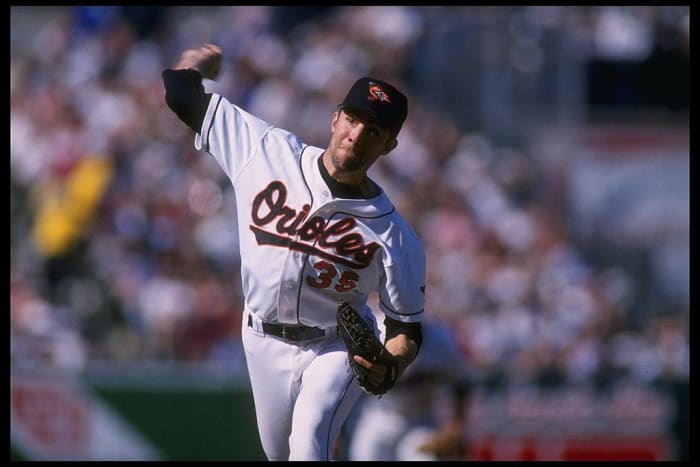
In his second season, Mussina went 18-5 while leading the AL with a .783 winning percentage. In the process he made his All-Star debut and finished in the top five of AL Cy Young Award voting for the first of six times. He also began a much longer run of sustained success, as it sparked a streak of 17 consecutive years of Mussina reaching at least 11 victories, an American League record.
1997: an epic postseason bounce back

After a tough postseason debut in 1996 when he posted a 5.45 ERA over two postseason starts, Mussina got into his groove the following year. "Moose" allowed just four runs over four starts against the Indians and Mariners, including twice outdueling Randy Johnson in Games 1 and 4 of the ALDS. In the ALCS, he struck out 15 Indians in Game 3, followed by another 10 while allowing only one hit over eight innings in Game 6. Unfortunately, the Orioles lost both of his ALCS outings in extra innings after Mussina had exited.
2003: another dominant postseason….in pinstripes

In 2001, Mussina changed locations in the AL East, signing a six-year pact with the New York Yankees. Two years later he had his signature performance in pinstripes in Game 7 of the 2003 ALCS. After never appearing as a reliever in his career, Mussina entered in the fourth inning and pitched the Yanks out of a jam with no outs and runners on the corners. He followed by pitching two more scoreless innings before turning over the game to the rest of the Yankee bullpen. Eventually Aaron Boone famously brought things to an end via a walk-off homer over the Big Green Monster to send the Yankees to another World Series.
2008: win No. 20, finally
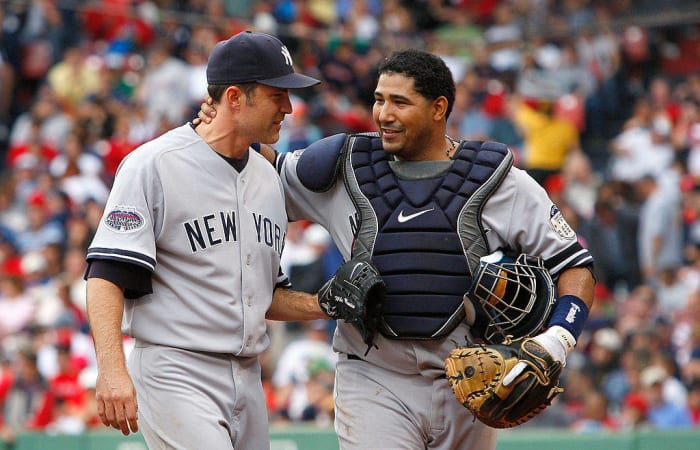
Although he entered the season with 250 wins on his resume, Mussina was yet to post a 20-win season. In the final start of his career, Mussina claimed that elusive 20th victory, via six shutout innings against the Red Sox. He would become the oldest player ever to win 20 games for the first time, at 39, and he would join Sandy Koufax as the only pitcher in history to retire following a 20-win season.
Mariano Rivera (1995-2013)

The indisputable greatest relief pitcher and one of the most legendary postseason performers in the history of the game, Mariano Rivera reaches Cooperstown in a class of his own. Rivera became the first unanimous selection to the Hall of Fame, appearing on all 425 ballots. In a career where he was a 13-time All-Star, five-time World Series champion and holder of 36 all-time MLB records and an additional eight Yankees records, it was an honor that was more than due to "The Sandman."
1996: making a setup statement
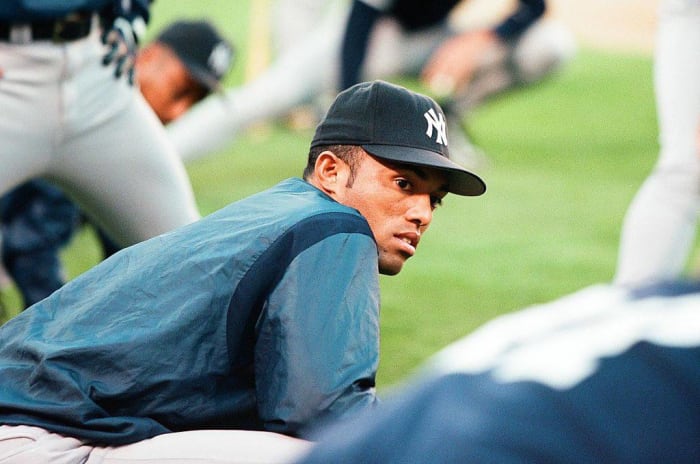
With the hundreds of saves that followed, Rivera’s pre-closer career often gets overlooked. But in his rookie season in 1996, Rivera was a dominant force ahead of then Yankees closer John Wetteland. He worked 107.2 innings over 61 games, striking out 130 while allowing only one home run. Rivera finished third in Cy Young Award voting, the best ever by a non-closer at the time. In the postseason, Rivera allowed only one run in nine appearances en route to his first World Series title.
1999: World Series MVP
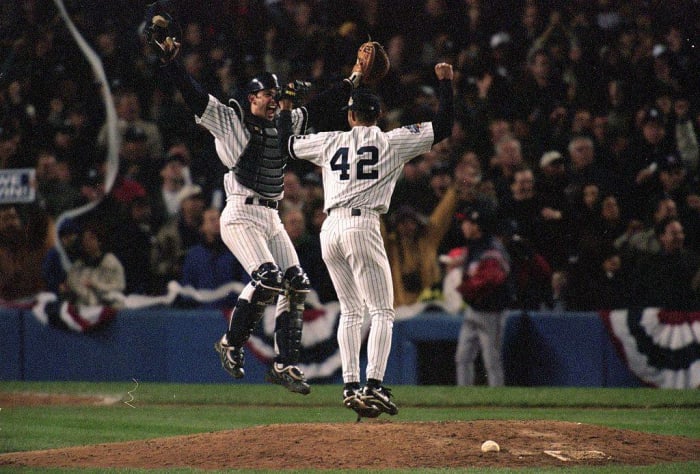
The 1999 season marked the first of three times Rivera would lead the American League in saves, with 45, and he finished third in AL Cy Young Award voting again. However, he would shine the brightest when the stakes were at their highest: in the World Series. Rivera appeared in three games, working 4.2 innings, striking out three, picking up a victory in Game 3 and notching two saves against the Atlanta Braves. He earned World Series MVP honors for the only time in his career, capping a postseason in which he allowed zero runs over 12.1 innings.
2003: a legendary October outing...even by legendary standards

Between a heroic effort from Mike Mussina and an iconic walk-off homer from Aaron Boone in Game 7 of the 2003 ALCS, Rivera did the dirty work. After the Yankees tied the game in the bottom of the eighth inning, Rivera took the mound and worked three scoreless innings, his longest outing in seven years. He picked up the victory, which advanced the Yankees to the World Series. Overall Rivera posted an 0.56 ERA over 16 postseason innings on the year.
2009: finishing up an unparalleled World Series run
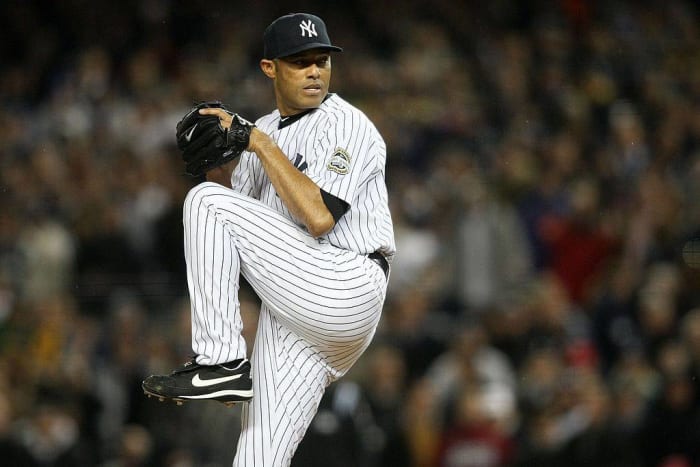
At age 39 and in the final of his seven World Series appearances, Rivera remained a living legend in October. He made four appearances in the series, allowing just five baserunners over 5.1 innings and notching two saves. The final one came in Game 3 and stood as his 11th World Series save, five more than the next closest competitor. In his overall World Series career, Rivera worked 36.1 innings, posted an 0.99 ERA, notched 32 strikeouts and converted all but one of his save opportunities.
2011: all-time saves king...by a distance
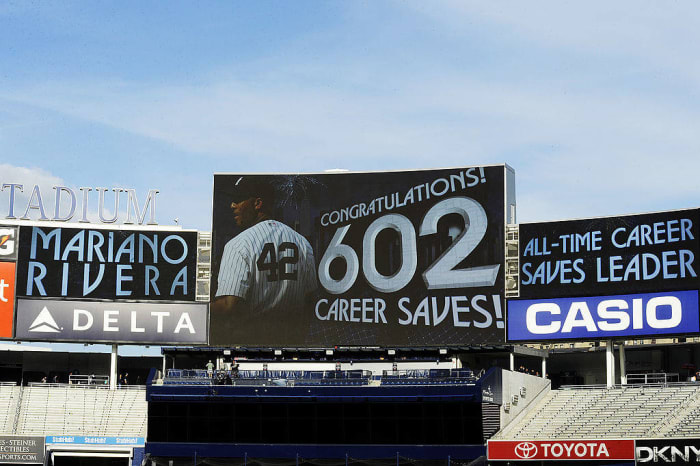
On Sept. 9, 2011, Rivera put a finishing touch on the greatest relief resume ever when he took over as the game’s all-time saves leader. Rivera passed Trevor Hoffman with his 602nd career save, five years after his longtime closer contemporary had set the record. Rivera would go on to save another 50 games in his career, extending the record to 652. When his postseason total of 42 conversions is added on, Rivera has 88 more saves than any other pitcher in history.
Lee Smith (1980-1997)
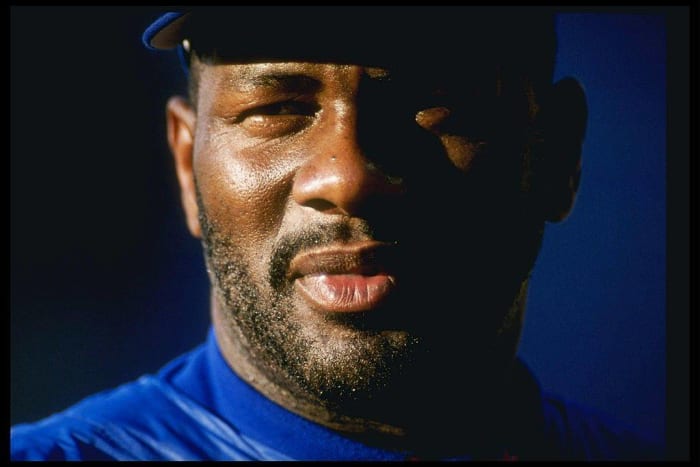
Smith spent his 19-year career ushering in a new era of relief pitching in the game. During a career that spanned tenures with eight teams, mainly the Chicago Cubs and St. Louis Cardinals, Smith became the game’s all-time saves leader for 13 years. With his career bridging the gap between the multi-inning reliever and the more specialized eighth/ninth- inning closer, Smith’s career set the tone for an entirely new generation of bullpen usage. After a 15-year tenure spent on the BBWAA ballot that was unsuccessful in garnering his election, Smith was elected unanimously by the Today’s Game Committee.
1981: first career save
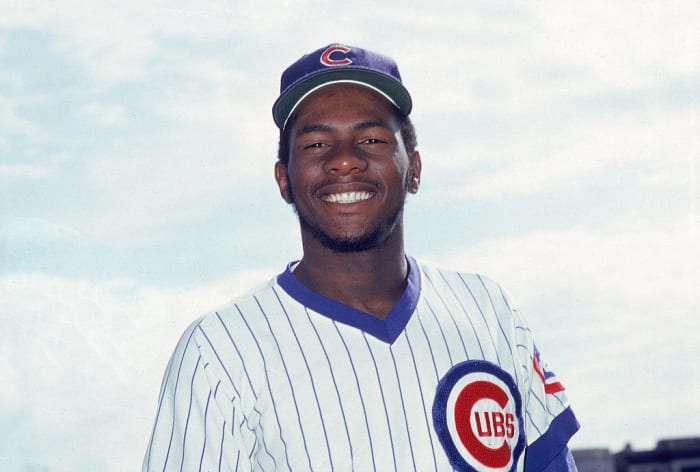
After breaking in with the Chicago Cubs in September of 1980, Smith spent his first few seasons in middle relief. The hulking, 6-foot-6 hurler notched his first career save on Aug.29 the following year. During the 1982 season, Smith was one of three pitchers who shared the role for the Cubs but thrived, converting 17 of 18 save opportunities.
1983: first time leading the league in saves
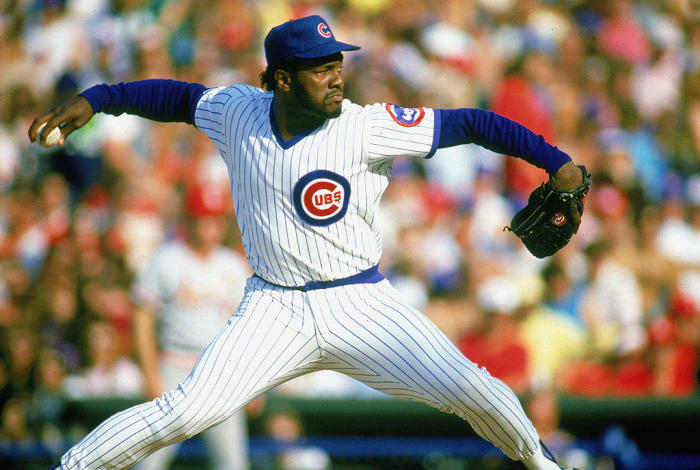
After future Hall of Famer Ferguson Jenkins returned to the club in 1982, he played a major role in mentoring and developing the young Smith during his ascension to full-time closer. The following season, Smith bloomed in full, leading the National League with 29 saves and making the first of seven All-Star appearances. Overall, Smith converted saves in 40 percent of the Cubs' victories and finished an NL-best 56 games on the year.
1991: Cy Young runner-up
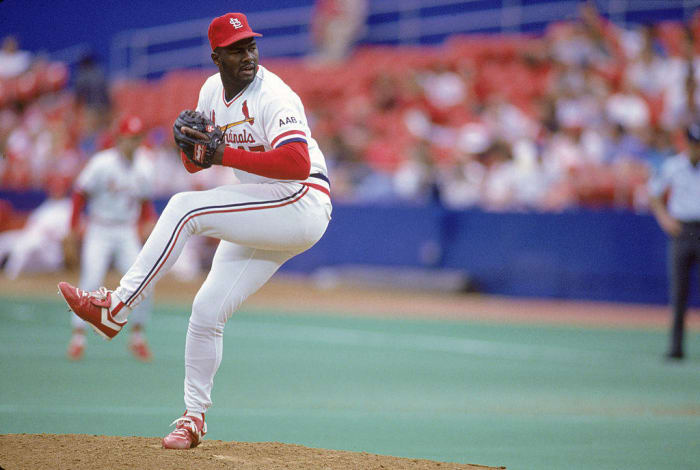
By 1990 Smith relocated to St. Louis where he was elected an All-Star in three of his four seasons he spent with the Cardinals. In 1991 Smith set a National League record with 47 saves, the first of three consecutive 40-save seasons he enjoyed in St. Louis. He finished in the top four of NL Cy Young Award voting in both 1991 and 1992, setting the all-time Cardinals records for single-season (47) and career saves (160) during his tenure with the club.
1993: all-time saves leader...twice
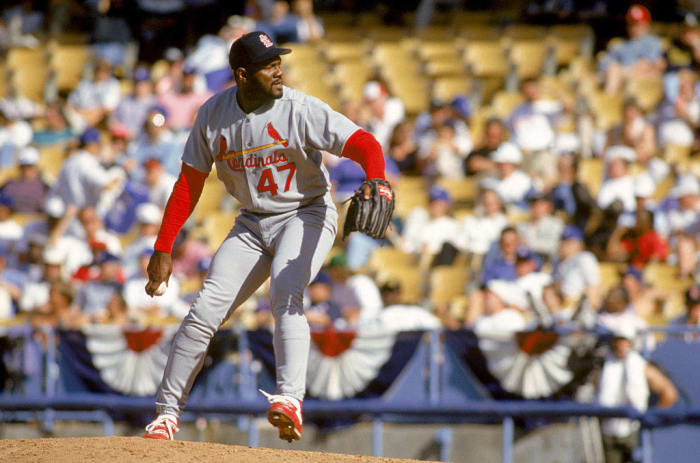
Already with the single-season saves record under his belt, Smith was closing in on a handful of career marks as well by 1993. Early in the season, he passed Jeff Reardon for the all-time record when he converted his 358th career save. Although Reardon was still active, he was on his downside and never caught up to Smith again. Over the course of the year, he also established a new record for most saves in National League history when he surpassed Bruce Sutter with his 301st career save.
1995: consecutive saves streak

Following stops with the New York Yankees and Baltimore Orioles, Smith landed with the California Angels in 1995 and briefly channeled his vintage form once again. On June 11, he saved his 16th consecutive game, setting a new record in the process. He eventually extended the streak to 19 and did not allow an earned run through the first two months of the season. Smith was elected to the American League All-Star Game, becoming the fourth player in history picked as a member of four different teams. He would retire two years later, having extended his saves 478, which was a record for 10 years.
Matt Whitener is St. Louis-based writer, radio host and 12-6 curveball enthusiast. He has been covering Major League Baseball since 2010, and dabbles in WWE, NBA and other odd jobs as well. Follow Matt on Twitter at @CheapSeatFan.
More must-reads:
- Stargazing: A Baseball Hall of Fame crystal ball
- Yardbarker's Ultimate MLB Hall of Fame tiers
- The 'Elected to Cooperstown with 90% of the vote' quiz
Breaking News
Customize Your Newsletter
 +
+
Get the latest news and rumors, customized to your favorite sports and teams. Emailed daily. Always free!
Use of this website (including any and all parts and
components) constitutes your acceptance of these
Terms of Service and Privacy Policy.

